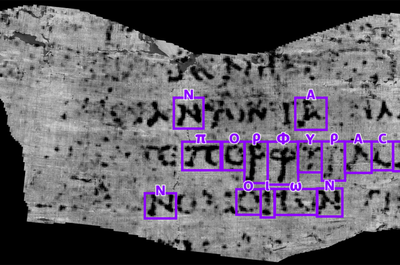
LEXINGTON, Ky. (WDKY) — After 21 years, cutting-edge technology pioneered at the University of Kentucky is being used to read a 2,000-year-old scroll.
The Herculaneum scrolls were burned and buried in the eruption of Mount Vesuvius in 79 A.D., and now the scrolls are too fragile to unfurl.
But Brent Seales, a computer science professor at the University of Kentucky, and his researchers developed technology to read what's on the scrolls without opening them.
It's been a 20-year passion for Seales, but now his work is being used to unlock history.
The unopened scrolls belong to the Institut de France in Paris and are believed to be from a library owned by a senior Roman statesman.
"What I expect is writing that expresses what it means to be human, speaking of love and war and of all the things that still matter to us because we are human, just like they were human, and the gulf that separates us, the 2,000 years, is much more narrow than you might think," Seales told Nexstar's WDKY.
There's a worldwide competition to learn what's written in the scrolls. Using Seales' technology, one word that's already been deciphered, πορφύραc, is "purple dye" or "clothes of purple."
Two computer science students, Luke Farritor in Nebraska and Youssef Nader in Berlin, found the word as part of the Vesuvius Challenge. Farritor won $40,000, and Nader won $10,000.
According to a news release for the University of Kentucky, earlier this year the team used “virtual unwrapping” to read text from the ancient En-Gedi scroll, revealing it to be the beginning of the Book of Leviticus.
The Vesuvius Challenge was launched in 2023 with a grand prize of $700,000 for anyone who could decode four passages from the scrolls.
“We have pursued the dream of reading this extremely challenging material from Herculaneum. We have now proven that it is possible. There is a huge emotional component, which is powerful and inspiring,” Seales said in a news release. “Overcoming damage incurred during a 2,000-year span is no small challenge. But that’s what researchers do — together, we conquer the seemingly impossible."